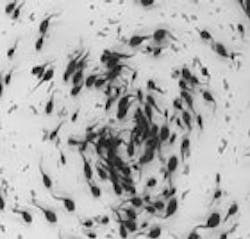Tadpoles Utilized to Rapidly Detect Water Pollution
Research conducted by University of Wyoming Professor Paul Johnson and others demonstrates that genetically modified tadpoles work well as sensitive monitors for rapidly detecting water pollution.
Johnson, a professor in the Department of Physics and Astronomy, said the research meets a pressing need to improve technologies for rapidly detecting physiological effects of environmental pollutants.
"This need is felt not only in the context of screening chemicals that might affect human health, but also to detect pollutants accumulating in the environment," Johnson said. "In each case methods have to be developed that provide robust and reproducible readings obtained on model systems that reflect the full impact of a chemical on a given organism."
The basic principle involves creating genetic constructions that enable a green fluorescent protein to be expressed in response to the physiological stress exerted on the tadpoles by pollutants for which the genetic modification was designed.
"Tadpoles are particularly useful as environmental monitors because they develop a complete immune system as well as complex heart and circulatory systems, similar to humans, but maturing over days, and not years," Johnson said. "In this work we combined genetically modified tadpoles with a detection system developed at UW to detect the presence of heavy metal pollution in river water in real time."
Johnson said numerous detection methods exist for environmental heavy metal monitoring, but they are very labor intensive and time consuming. Such easy to use technologies combining rapidity with living organism measurements had not been developed previously, he said.
Source: University of Wyoming
